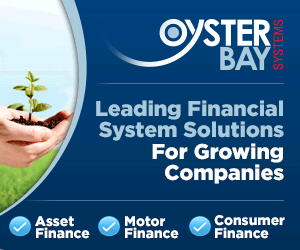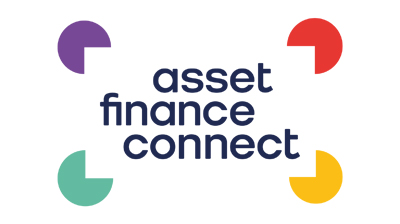This overall outlook is similar to that from another major regional bank, SEB, which states in its recent Nordic Outlook that “The economic outlook in the Nordic countries remains divergent.”
Of the Nordic economies, strongest growth in 2015 is forecast for Sweden, driven by accelerating domestic demand and boosted by faster growth in Germany – Sweden’s largest export market.
The view is that Norwegian GDP growth is likely to be affected by the decline in oil prices, and that investment and capital expenditure are feeling the squeeze. Set against that is the weakened state of the Norwegian currency, which has improved competitiveness and should help exporters.
Domestic demand is predicted to pick up at last in Denmark, thereby raising growth prospects, but economic activity continues to suffer in Finland and the forecasts are for limited GDP growth.
A pertinent point made in the Nordea Economic Outlook is that “Small open economies such as the Nordic countries are very reliant on international economic trends.” The longer-term prospect is for these countries to benefit from growing export opportunities as the global economy grows, but uncertainties remain for the nearer term.
The travails in the eurozone continue, and sanctions against Russia, combined with Russia’s retaliatory measures and economic slowdown may continue to have an inhibiting effect. This has certainly been the situation in Finland, whose proximity to Russia is a definite factor concerning cross-border trade.
However, although they are also closely linked to Russia, the situation does not look so gloomy in the three Baltic States, where domestic consumption is forecast to grow relatively robustly, particularly if demand improves from markets to the west.
Real GDP growth estimates (%)
| 2014 | 2015 | |
|---|---|---|
| Nordics | ||
| Denmark | 1.3 | 1.7 |
| Finland | -0.5 | 1.0 |
| Norway | 1.8 | 1.6 |
| Sweden | 2.7 | 2.4 |
| Baltics | ||
| Estonia | 2.8 | 3.8 |
| Latvia | 3.8 | 4.0 |
| Lithuania | 3.2 | 3.6 |
Source: Nordea Markets
Small business outlook
In the Baltic States, small and medium-sized enterprises (SMEs) are concerned about economic challenges and geopolitical tensions, but regard innovation to be an important method for increasing efficiency and competitiveness, according to a recent survey conducted by SEB.
Baltic Business Outlook 2015 surveyed more than 6,100 Estonian, Latvian and Lithuanian enterprises and found that 20% of SMEs in Estonia, 16% in Lithuania and 10% in Latvia anticipate turnover growth of more than 15% this year.
“Expectations are mainly lowered by the situation prevalent on export markets, which is caused by the Russian and Finnish markets,” said Eerika Vaikmäe-Koit, head of Retail Banking and Technology Area at SEB (pictured above).
The attention of Baltic SMEs remains on the domestic market; according to the survey, the proportion of new or existing enterprises focusing on foreign markets is the highest in Lithuania at 33%, followed by Estonia (28%) and Latvia (18%).
In Estonia and Lithuania, in particular, SMEs are planning to increase efficiency by way of innovation: a total of 73% of the enterprises surveyed in Estonia, 69% in Lithuania and 39% in Latvia plan to undertake innovations or organize relevant training for employees in 2015.
Due to the insecurity of the export market, enterprises are more cautious when planning new investments. Estonian enterprises are the most active, with 41% planning new investments in 2015, but the proportion of enterprises planning capital investments of more than €30,000 has decreased in all three countries, to approximately 16-18% of the total sample.
Baltic consumer loan provision
Another piece of research by SEB, the Baltic Household Outlook, finds that consumer loans in each of the Baltic States is decreasing, while hire purchase is being preferred in Estonia and Lithuania.
The report reveals that, at the end of 2014, the volume of consumer loans and other loans was 8.9% lower in Latvia, 7.3% lower in Lithuania, and 2% lower in Estonia than the previous year. In 2013, the portfolio decreased by 11% in Latvia, 3.2% in Lithuania, and 4.6% in Estonia. The report comments: “The decrease in the volume of loans is decelerating, but turning to growth is not foreseen at this time.”
Triin Messimas, financial expert at SEB Estonia, noted: “Families do not seem to be eager to finance their consumer habits with a bank loan. In Estonia, consumer loans have been replaced with hire purchase, which seems to be a convenient and practical solution to pay for bigger purchases.” He continued: “There are no specific statistics available to assess the volume of hire purchase contracts. The national accounts reveal that the volume of loans with a term of up to one year and issued outside of financial institutions grew by more than 30% in 2014. These loans include both instant loans as well as hire purchase.”
According to the Bank of Lithuania, the volume of consumer loans taken from non-financial institutions grew 17% in 2014 compared to the previous year. In Latvia, conversely, the amount of household loans held by non-financial institutions is decreasing, which means that loan providers from outside the banking sector are not replacing bank loans in Latvia.
Opportunities for asset finance

In the current climate, there are distinct opportunities for asset finance providers such as leasing companies. Pedram Tadayon, CEO of leading Scandinavian asset finance software company Emric (pictured above), told Asset Finance International: “We see increasing numbers of businesses that are turning to asset finance to fund spending on new and replacement business equipment. For some companies, asset finance helps them to replace ageing equipment, while for others it helps them to expand and grow. Whatever the reasons, asset finance plays an important role in funding business investment and in contributing to the economic recovery.”
He continued, noting the pressures on banks caused by increasing regulatory oversight and the need to meet capital adequacy provisions, stating: “We also see that banks are pushing more clients into asset-backed financing as they look to shore up their balance sheets to meet capital regulations.”
Tadayon concluded: “The use of this form of financing for commercial vehicles, IT equipment and plant & machinery has been growing strongly over recent years,” adding, from Emric’s perspective of being based in Stockholm: “In Sweden the market has traditionally had a B2B focus, but we see the strongest growth on the private leasing side, especially for vehicles.”








